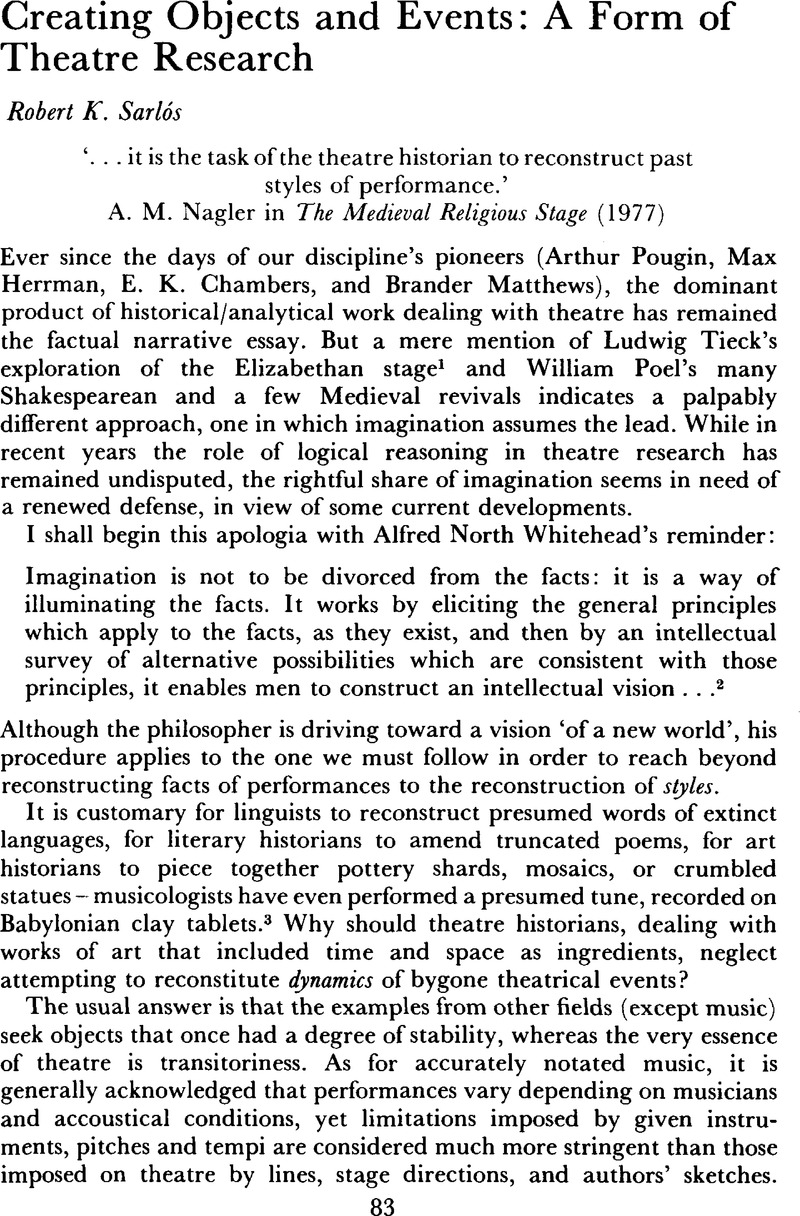Article contents
Creating Objects and Events: A Form of Theatre Research
Published online by Cambridge University Press: 23 January 2009
Abstract

- Type
- Articles
- Information
- Copyright
- Copyright © International Federation for Theatre Research 1979
References
Notes
1. In a short story, Der junge Tischlermeister (1836) in his Schriften, 28 (Berlin, 1854)Google Scholar, as extensively cited and paraphrased in Nagler, A. M., Shakespeare's Stage (New Haven, 1958), pp. 26–32.Google Scholar
2. The Aims of Education and Other Essays (New York, 1929), p. 139.Google ScholarPubMed
3. Sounds from Silence; Recent Discoveries in Ancient Near Eastern Music, by Kilmer, Anne Draffkorn, Crocker, Richard L., and Brown, Robert R. (Berkeley, Bit Enki: 1976).Google Scholar
4. Max Weber's phrase, used by Nagler, p. vii.
5. Catalogue des livres composant la bibliothèque de feu M. le Baron James de Rothschild, Paris, 1884–1920, Vol. 4, p. 378.Google Scholar
6. Mintz, Nina, ‘Theater Museum Displays and their Importance to the Theaters' Practice’, Acts of the IXth International Congress of the Libraries and Museums of the Performing Arts, ed. Pio, Per and Steinaa, Eva (Copenhagen: The Royal Library, 1976).Google Scholar
7. Author's personal recollection.
8. Elliott, John R. Jr., ‘A Checklist of Modern Productions of the Medieval Mystery Cycles in England’, Research Opportunities in Renaissance Drama, 1970/1971.Google Scholar
9. Roddy, Kevin, ‘Revival of the Cornish Mystery Plays in St. Piran's “Round” and of the York Cycle, 1969’, New Theatre Magazine, Vol. 9, 3. pp. 16–21.Google Scholar
10. Woods, Alan, ‘Reconstruction of Historic Performances for Modern Production: Performance Research at the OSU Theatre Research Institute’, Acts of the IXth International Congress of the Libraries and Museums of the Performing Arts, ed. Pio, Per and Steinaa, Eva (Copenhagen: The Royal Library, 1976).Google Scholar
- 2
- Cited by


